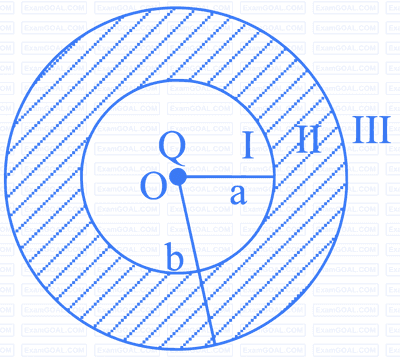
$(\mathrm{I}: r < a, \mathrm{II}: a < r < b$, III: $r>b$ )


Electric field in a certain region is given by $$\overrightarrow{\mathrm{E}}=\left(\frac{\mathrm{A}}{x^{2}} \hat{i}+\frac{\mathrm{B}}{y^{3}} \hat{j}\right) \text {. The } \mathrm{SI} \text { unit of } \mathrm{A} \text { and } \mathrm{B}$$ are :

Two isolated metallic solid spheres of radii $$\mathrm{R}$$ and $$2 \mathrm{R}$$ are charged such that both have same charge density $$\sigma$$. The spheres are then connected by a thin conducting wire. If the new charge density of the bigger sphere is $$\sigma^{\prime}$$. The ratio $$\frac{\sigma^{\prime}}{\sigma}$$ is :

A point charge $$2\times10^{-2}~\mathrm{C}$$ is moved from P to S in a uniform electric field of $$30~\mathrm{NC^{-1}}$$ directed along positive x-axis. If coordinates of P and S are (1, 2, 0) m and (0, 0, 0) m respectively, the work done by electric field will be